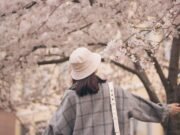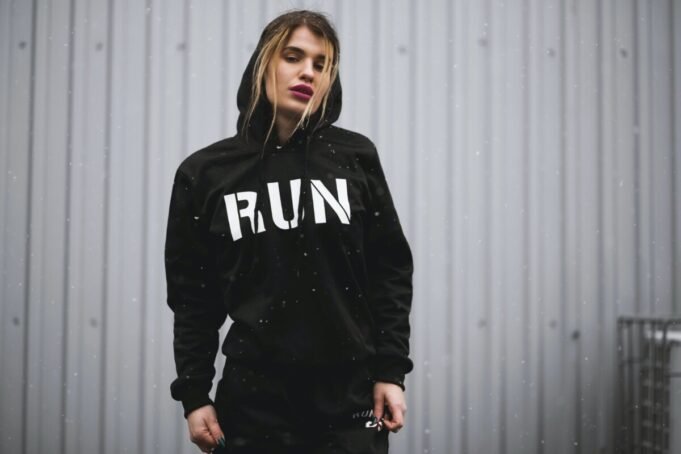Urban style encompasses the diverse range of fashion trends and expressions that emerge from cities around the world. More than just clothing, urban style represents a celebration of multicultural influences, individuality, and the blending of creativity across borders. As global connectivity increases, diversity in fashion continues to be embraced, leading to innovative new styles that fuse together elements from different cultures. This article explores global fashion and its impact on urban style, highlighting the richness that comes when diversity is championed.
Global Fashion and Its Influence on Urban Style
The development of urban style has been hugely impacted by global fashion. As trends emerge and take hold in fashion capitals like New York, London, Milan and Paris, they quickly spread worldwide through social media and other digital platforms. This global dissemination of fashion has led cities across the world to incorporate international influences into the evolution of their own unique urban styles.
For instance, Tokyo street style often encompasses a mix of avant-garde and Kawaii elements, reflecting both Japanese pop culture and cutting-edge global fashion. Seoul street style is known for its bold mixture of Korean and Western trends. Lagos in Nigeria, meanwhile, has developed a vibrant urban fashion scene that fuses traditional African and contemporary Western styles.
This exchange of inspiration is enabled by the connectivity of the digital age. As influencers on platforms like Instagram and TikTok gain global followings, their fashion choices spread rapidly and shape the next wave of trends. Social media also provides visibility for diverse urban style cultures that may have previously remained localized. The result is an intermixing of ideas that continuously redefines the boundaries of urban fashion.
A collage of images showcasing different urban styles from around the world
A collage of images showcasing different urban styles from around the world
As cities embrace both international and local influences, they forge urban fashion identities that showcase diversity. Global fashion may inspire new ideas, but these are ultimately adapted and made their own by diverse cultures across the world. This fusion of global and local perspectives makes urban style a truly creative celebration of diversity.
Diversity in Fashion: A Celebration of Individuality
Beyond adopting global trends, urban style also champions diversity through enabling self-expression. Fashion choices allow individuals to communicate their cultural heritage, interests, beliefs and personalities. As a result, urban fashion cultures become rich tapestries of identities rather than monoliths of conformity.
The rise of multicultural fashion has further expanded the scope for individuality. Models, designers and brands from diverse backgrounds have generated more representation and variety in the fashion industry. There is now space for more people to see themselves reflected and to feel encouraged to embrace self-expression through style.
A group of people from diverse backgrounds wearing different urban styles
A group of people from diverse backgrounds wearing different urban styles
From modest fashion worn for religious reasons to gender-fluid clothing that challenges binary norms, fashion empowers self-articulation. It also enables political and social commentary. By celebrating diversity rather than suppressing it, urban style gives people the freedom to choose fashion that aligns with who they are.
This culture of acceptance and encouragement of individuality breeds creativity. People feel emboldened to experiment, fuse different influences and pioneer new looks. When self-expression is valued over fitting in, urban fashion organically becomes more vibrant, progressive and diverse.
Cultural Influences in Urban Fashion
Beyond individual identities, urban style also reflects our collective cultural heritage. Fashion choices can represent connections to ethnic roots, spiritual values, ceremonial traditions and more. Diverse cultural influences impart deep meaning and symbolism into clothing.
In many cities, traditional garments are worn as proud expressions of cultural history. For instance, the kebaya is a traditional blouse-dress that women in Singapore and Malaysia integrate into modern outfits as a celebration of their heritage. In a similar vein, the kimono retains an important cultural role in Japan despite the nation’s widespread adoption of Western dress.
A traditional Japanese kimono being worn in a modern urban setting
A traditional Japanese kimono being worn in a modern urban setting
Urban style also increasingly fuses together multicultural elements to create modern cultural expressions. For example, South Asian street style often brilliantly combines traditional silhouettes and fabrics like kurtas with Western-style jeans and sneakers. These fused looks represent new cultural identities.
Respecting cultural heritage while also embracing evolution is key to fostering diverse urban style. By thoughtfully integrating traditional garments from their communities, young generations can anchor their fashion in history while still crafting modern looks that push boundaries.
Fusion Fashion: Blending Cultures and Creating New Trends
At the intersection of diverse cultures in urban environments, innovative fusion fashion is born. This blending of styles from different cultures creates entirely new fashion aesthetics.
Asian-American street style is one prominent example, as young Asian Americans mix elements from both Eastern and Western cultures. Popular looks fuse together kimono-inspired designs, Harajuku vibes and American casualwear. This celebrates the duality of Asian-American cultural identity in an aesthetically striking way.
In a similar vein, Muslim streetwear, pioneered by labels like VELA Scarves and Haute Hijab, blends influences from Middle Eastern, Western and modest fashion. The result is a trendy new style that appeals to modern Muslims looking to express both their faith and personal flair through fashion.
A fusion fashion piece that combines elements from two or more cultures
A fusion fashion piece that combines elements from two or more cultures
Beyond specific cultural fusions, a global mixing of styles generates new trends. For instance, sportswear, street goth and Harajuku style have all collided to create an edgy Y2K aesthetic that has recently dominated global youth fashion.
By embracing diversity, urban fashion incubates these innovative blends. The interchange of ideas between cultures creates possibilities that would not have otherwise emerged, contributing to the endless evolution of fashion.
Global Trends in Urban Fashion
Certain movements gain such dominance that they shape urban style on a global scale. Sustainability has become one of the most impactful trends, as demand grows for ethical production and eco-conscious textiles. Consumers increasingly scrutinize brands’ commitments to sustainability.
In response, urban fashion has taken a progressive stance. Rising sustainable brands like Reformation and Stella McCartney have pioneered eco-friendly practices that are now rippling through mainstream fashion. Vintage, upcycling and clothing rental have also gone mainstream as more urban consumers try to mitigate fashion’s environmental impact.
A sustainable urban fashion collection
A sustainable urban fashion collection
These shifts indicate how global crises can steer the evolution of urban style. Fashion’s role as a means of self-expression now also encompasses the expression of one’s environmental and social values. This has created space for brands embracing sustainability to flourish and shape urban trends.
In a similar vein, the COVID-19 pandemic has also catalyzed new directions in urban fashion. With increased time at home, consumers have favored comfort, spurring the rise of categories like loungewear and activewear. Shifts toward digital shopping have also accelerated.
Urban style continues to develop as individuals respond to the issues that matter most. By enabling diverse perspectives to steer innovation, fashion can progress in step with the evolving social conscience of its creators.
Fashion as a Form of Self-Expression
At its core, urban style empowers self-expression. Clothing and accessories allow wearers to communicate who they are to the world around them. Fashion provides a canvas for individuality.
For many, personal style is a form of creative outlet. Piecing together outfits brings satisfaction and joy. Expressing oneself through fashion builds confidence. The streets become runways for displaying identity.
A person using fashion to express their personal style and beliefs
A person using fashion to express their personal style and beliefs
Urban fashion also enables political, social and cultural commentary. Slogan t-shirts proclaim support for causes. Gender-bending clothing challenges norms. Traditional garments worn with pride spread awareness of cultural heritage.
By welcoming uniqueness rather than oppressing it, cities enable fashion to flourish as a platform for self-expression. The varied identities, beliefs, values and interests within communities translate into the diverse urban styles we see today.
Fashion gives us the tremendous gift of being able to share who we are with the world. Urban style celebrates this by fostering spaces where people can freely communicate their inner selves through their exterior selves.
Conclusion
Urban fashion is revolutionary in how it embraces individuality and diversity. We each have a cultural heritage that informs us, a set of beliefs that guides us and a distinct personality that shapes us. Urban style gives us the freedom to weave all of these elements into how we present ourselves creatively.
By welcoming diverse influences from around the globe, championing multiculturalism and enabling self-expression, cities cultivate rich fashion cultures. Urban style becomes a showcase of the collective and individual identities of citizens from all walks of life.
When people are empowered to dress in alignment with who they are, fashion organically becomes more vibrant, progressive and meaningful. As urban communities continue to promote diversity and connectivity across borders, the scope for innovation expands.
Urban style thrives because it is not confined to a single ideal. There are as many fashion identities as there are identities of self. As we embrace our differences while finding common ground, urban fashion will continue to develop in exciting new directions. The streets are alive with a celebration of our diversity.



































